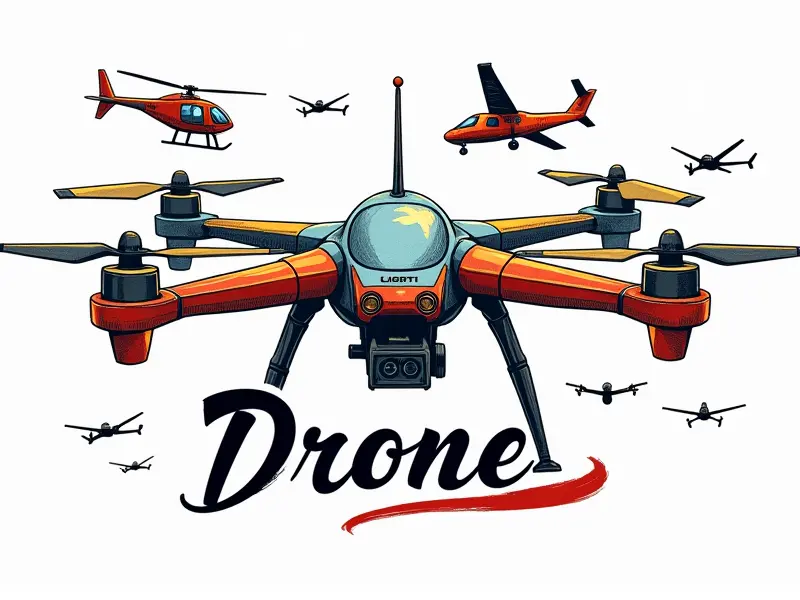DIY GPS module setup

How to Install a DIY GPS Module Easily
Setting up your own GPS module can be an exciting and rewarding project, especially for those interested in electronics and navigation technology. Whether you're building an RC drone, creating a tracking device, or integrating GPS into another electronic project, this guide will walk you through the process step-by-step.
Beginner's Guide to Installing GPS Module
If you're new to DIY projects involving GPS modules, it can be daunting to know where to start. This section provides a comprehensive overview of the essential components and tools needed for your project:
- GPS Module: Choose from various options like NEO-6M, NEO-M8N, or u-blox EVK.
- Microcontroller: Common choices include Arduino, Raspberry Pi, and ESP32.
- Breadboard and Jumper Wires: Essential for connecting components.
- Voltage Regulator: To ensure stable power supply to your GPS module.
DIY GPS Module Installation Made Simple
The process of installing a DIY GPS module is straightforward once you understand the basics. Follow these steps to get started:
- Power Supply Setup: Connect your power source (3.3V or 5V) to the VCC and GND pins on the GPS module.
- Data Communication: Use UART communication by connecting TX from your microcontroller to RX on the GPS module, and vice versa for RX to TX.
- Configuration: Initialize your GPS module using a serial monitor or programming environment like Arduino IDE.
Easy Steps to Configure Your GPS Module
Configuring your GPS module correctly is crucial for optimal performance. Here’s how you can do it:
- Open Serial Monitor: Connect your microcontroller to a computer and open the serial monitor.
- Send Initialization Commands: Send commands like "$PMTK314,0,1,0,0,0,0,0,0,0,0*29" for NMEA messages or "$PMTK251,1*2F" to set the baud rate.
- Check Output: Verify that your GPS module is sending data by looking at the serial monitor output.
DIY Project: Basic GPS Module Setup
This section covers a basic setup for integrating a GPS module into an existing project. Here’s what you need to do:
- Select Your Microcontroller: Choose the right microcontroller based on your project requirements.
- Connect Components: Connect power, ground, and data lines between the GPS module and microcontroller.
- Write Code: Program your microcontroller to read and process GPS data.
Simplified DIY GPS Module Integration
Incorporating a GPS module into your project can be simplified by following these steps:
- Understand the Hardware Interface: Learn about the pins and functions of your GPS module.
- Install Necessary Libraries: Use libraries like Adafruit_GPS.h or TinyGPS++ for easier communication.
- Test Communication: Ensure that data is being transmitted correctly between the GPS module and microcontroller.
Build and Set Up Your Own GPS Module
Building your own GPS module setup involves several stages. Here’s a detailed breakdown of each step:
- Component Selection: Choose the right components based on your project needs.
- Circuit Design: Plan out how to connect all components using breadboard or PCB.
- Software Development: Write code to initialize and read data from the GPS module.
Quick Setup Tutorial for DIY GPS Module
This quick tutorial will help you get your GPS module up and running in no time. Follow these easy steps:
- Power Up: Connect power to the VCC pin of the GPS module.
- Data Connection: Use UART communication for data transfer between microcontroller and GPS module.
- Configuration Check: Ensure that your GPS module is configured correctly by checking output on a serial monitor.
DIY GPS Module Setup Tutorial
This comprehensive tutorial covers everything you need to know about setting up a DIY GPS module. Follow these detailed instructions:
- Gather Components: Collect all necessary hardware and software tools.
- Connect Hardware: Assemble your components on a breadboard or PCB.
- Write Code: Program your microcontroller to interact with the GPS module.
DIY GPS Module Setup for RC Drones
If you’re working on an RC drone project, integrating a DIY GPS module can enhance its capabilities. Here’s how to do it:
- Select Appropriate GPS Module: Choose a lightweight and compact GPS module suitable for drones.
- Integrate with Flight Controller: Connect the GPS module to your drone's flight controller using UART or I2C communication.
- Configure Firmware: Adjust firmware settings in your flight controller software to enable GPS functionality.
Simple Steps for DIY GPS Module Integration
To integrate a GPS module into any project, follow these simple steps:
- Select the Right Components: Choose components that fit your specific needs and constraints.
- Connect Everything Properly: Ensure all connections are secure and correct to prevent errors.
- Test Thoroughly: Verify functionality by testing GPS data transmission and accuracy.
Conclusion
Setting up a DIY GPS module can be an enriching experience for electronics enthusiasts. By following the steps outlined in this guide, you’ll be able to integrate GPS technology into your projects with ease. Whether it’s for RC drones, tracking devices, or other applications, having a well-configured GPS module will enhance the functionality and reliability of your creations.

